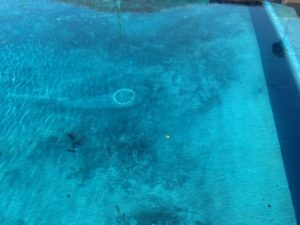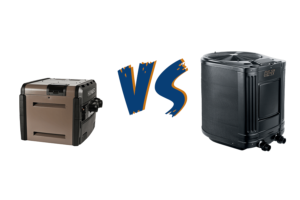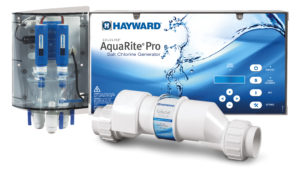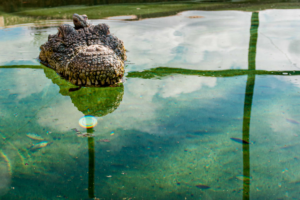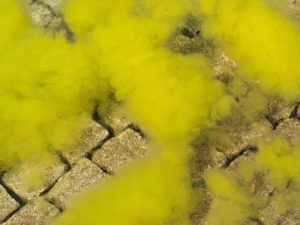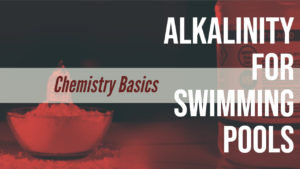What Is Ph?
If you’ve ever gotten red stinging eyes from swimming poor Ph management among several other factors is likely a cause. Ph stands for Potential of Hydrogen. It measures the balance of Hydrogen ions in a solution (your pool water) and the result determines whether or not the solution is Basic, Neutral or Acidic.
We measure Ph on a 14 point scale from 0 all the way to 14. 7 is our line in the sand, our Neutral midpoint anything less than 7 is considered acidic and anything above seven is considered basic. For some visualization for you here are some Ph levels associated with common items:
1- Battery Acid
2- Lemon Juice
5- Black Coffee
7- Water
9- Baking Soda
11- Amonia
14- Drain Cleaner
Pools that tend too acidic or basic can both cause discomfort and harm the equipment of your pool For a more in-depth breakdown of the science of Ph please check out khan academies fantastic article here. When it comes to managing the Ph of your pool we want to stay fairly neutral in order to keep your equipment and you as safe as possible.
Ideal Ph Ranges & How To Adjust to Them
Your goal should be to maintain a Ph level between the range of 7.2-7.6. At this level, there should be no need to urgently employ the use of much if any Ph modifying chemicals. For Ph modification, we recommend using muriatic acid and soda ash (sodium carbonate). you can use sodium bicarbonate to adjust a pools Ph but be aware that it will have a very strong influence on your pool’s alkalinity levels.
How To Lower Ph Using Muriatic Acid
To lower the Ph of your pool using muriatic acid there are some safety procedures we HIGHLY recommend you follow to keep yourself from a chemical burn or spill:
- Rubber Gloves
- Protective Close-Toed Shoes
- Protective Glasses
- A Hose with Running Water
This stuff is gnarly and can put a real damper on your day. Along with the safety equipment, there are some recommendations when it comes to actually administer the acid itself. Always disperse the acid around the perimeter of the pool for the best dilution. Take care to avoid steps and swim-outs, this acid is incredibly aggressive and can etch away at surfaces removing color and often changing textures. Even with proper dispersion muriatic acid has a tendency to form fumes when mixing with your pool water so keep all pets away and take note of the wind’s direction to keep yourself safe.
Many people overdose with muriatic acid leading to drastic changes in Ph and alkalinity. Only in the MOST extreme and special circumstances should the standard 15,000-gallon pool require an entire gallon bottle of acid. Take your reading and administer the acid appropriately.
How To increase Ph using Soda Ash or Baking Soda
Increasing Ph using soda ash or sodium bi-carb is thankfully much simpler and safer than handling muriatic acid. For sodium bi-carb simply take a measured amount of the powder and disperse over the surface of the pool. There may often be clumps that fall the thee floor of the pool but these are generally harmless, simply brush them to aid in the dissolving process.
Unfortunately, this method can lead to issues with water clarity when using soda ash though so we recommend a slightly different method. Simply dissolve the amount of soda ash you need into a bucket filled with water from the pool and allow the mixture to settle. this will take a few minutes but once it’s done simply pour the water the pool. This will give you the benefits of lowering your pool’s Ph while not interfering with your water clarity.
What Causes Ph levels to change
There’s a lot of factors that change pool chemistry and it literally changes with the weather. The most common item we can control though that does change a pools Ph is a salt chlorine generator. The chlorine produced by these generators tends to have quite a high Ph level and over the day slowly raises your pools Ph making the salt cell itself more apt to scale. Lowering your salt cells output can often help to mitigate this Ph rise (it shouldn’t be on super chlorinate all day) but often the frequent use of acid as well as consistent alkalinity monitoring is required.
Dosing Guides
To Increase Ph by .2

To decrease Ph by .2

F.A.Q
Muriatic acid is the most common chemical used to lower swimming pools Ph.
Sodium Bicarbonate (baking soda) or soda ash is the most common chemicals used to increase swimming pools Ph.
7.4 is the perfect level but 7.2 to 7.6 is the ideal range for swimming pools.
Cloudy water is usually a lack of sanitation and filtration, which can be affected by both high & low Ph levels.


